Written by Ellen Fitzpatrick, SDSU Agronomy, Horticulture, and Plant Sciences undergraduate student, under the direction and review of Kristine Lang, Assistant Professor, and Rhoda Burrows, former Professor & SDSU Extension Horticulture Specialist. Special thanks to Rudy Voss and Katelyn Winberg for peer review of this article.
Introduction to Tomatillos
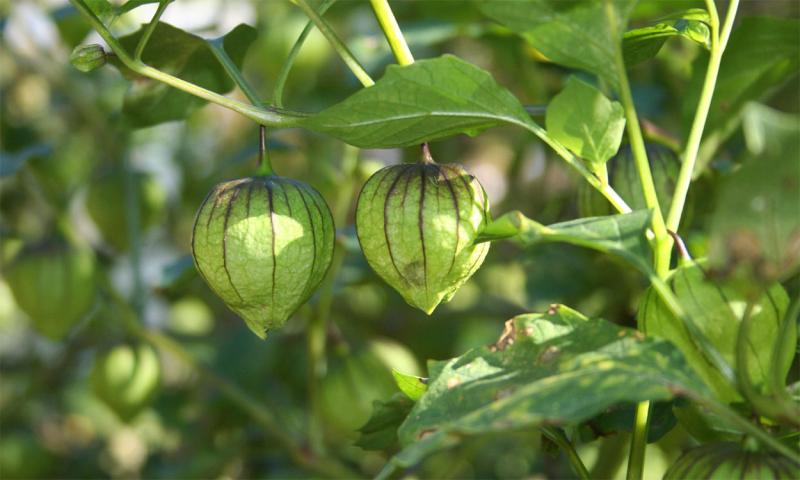
There are two main species of tomatillos: Physalis ixocarpa and Physalis philadelphica. Tomatillos are an annual, warm-season crop with requirements similar to tomatoes, except that they tend to be more drought-tolerant and grow better in raised beds or rows, which promote good soil drainage. Tomatillos should be started indoors 6 to 8 weeks before transplanting and will begin to produce fruit 60 to 75 days after transplanting. The fruit of the tomatillo plant resembles that of a groundcherry, with a thin, papery husk. Fruit can be green, yellow, red, or purple, depending on the variety, and the flavor is said to be similar to a “tangy lemon.” The plants themselves grow to be about two to four feet tall and equally as wide. Although the plants resemble tomatoes, they need less training than tomatoes due to their thinner stems and lighter fruit.
Tomatillos come in many colors, sizes, and flavors. The three most-common colors and their varieties are listed below.
Types of Tomatillos
Green
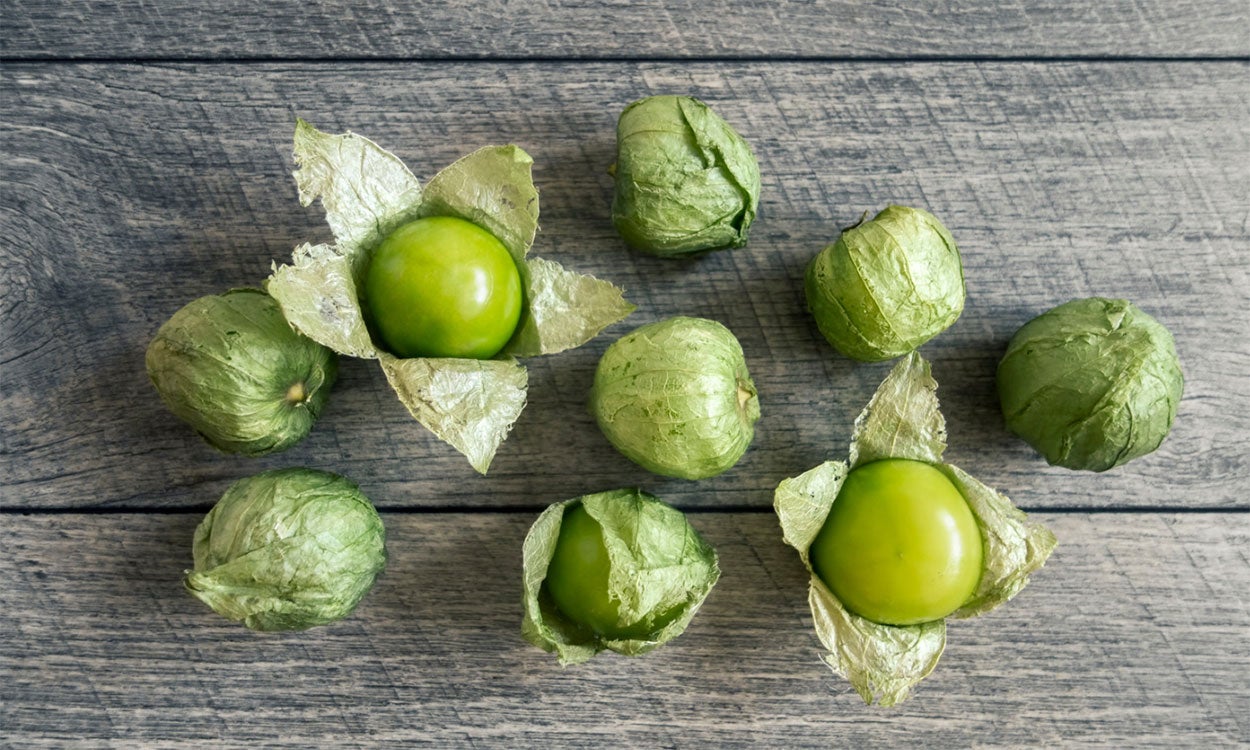
Varieties include Toma Verde, an early variety with a sweet flavor; Miltomate, a 1-inch diameter fruit with a tart flavor; Verde Puebla, a larger and more yellow-green variety with a sweet/tart flavor; and Zuni, a very small variety with a sweet flavor. (Courtesy: gerenme, Canva)
Purple
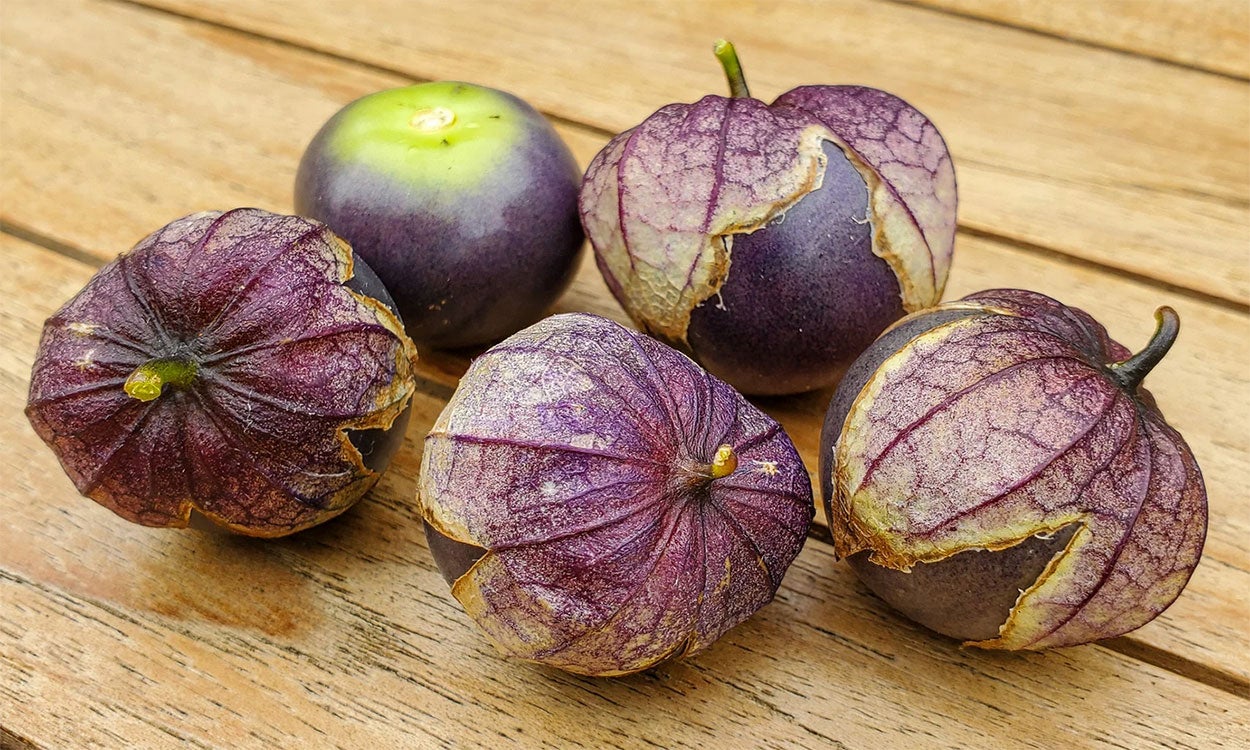
Purple, and Purple De Milpa, which both have deep-purple coloration and a tangy-sweet flavor, which is much sweeter than the green varieties. (Courtesy: Anthony Jackson, Canva)
Yellow
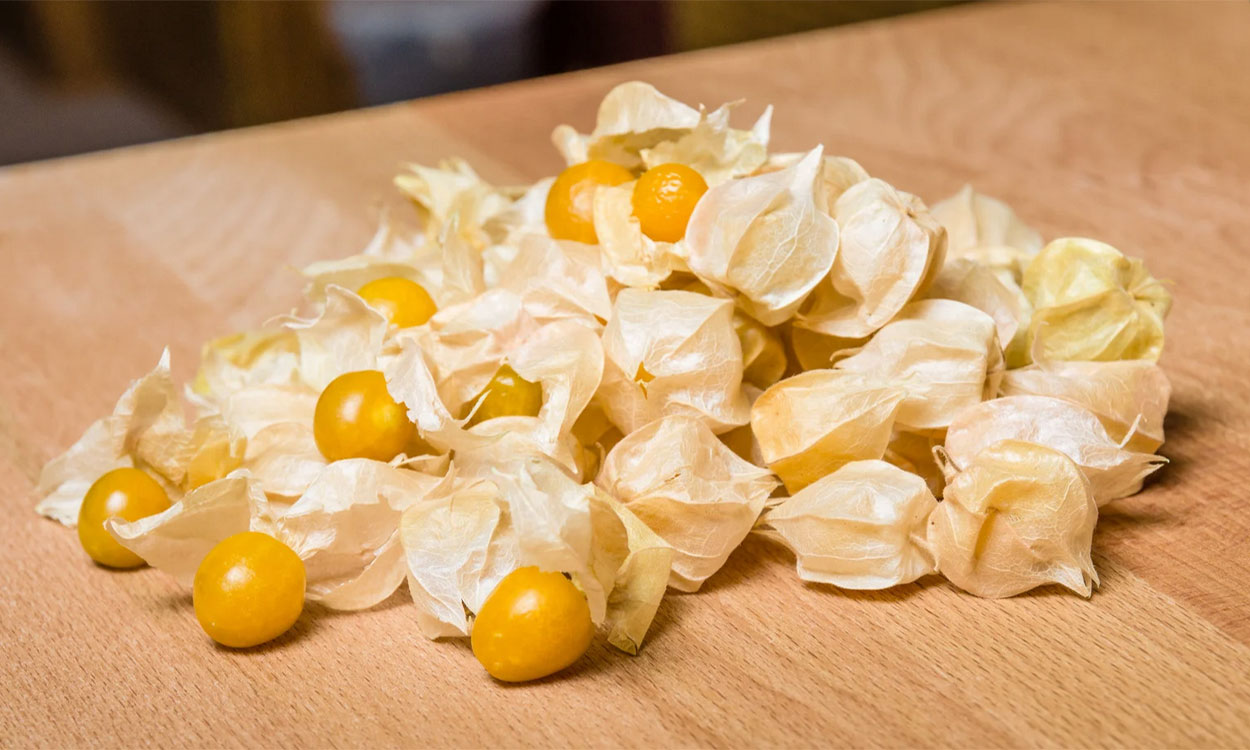
Varieties include Mexican Strain, which is a larger tomatillo with a more-savory flavor, and Pineapple, which is cherry-sized and has a sweet, citrussy flavor. (Courtesy: Zigzag Mountain Art, Canva)
Managing Tomatillo Quality
Tomatillo quality can be managed by ensuring that the plants have adequate moisture and fertilizer, and by controlling weeds, insects, and disease. Tomatillos need about 1 to 1.5 inches of water per week to maximize production; although, keep in mind that tomatillos prefer drier conditions, so let the soil dry slightly between waterings. Any all-purpose garden fertilizer incorporated into the top 4 to 6 inches of soil should be enough to maximize production. Be careful not to over-fertilize, as this will cause an abundance of vegetative growth and no fruit production. Weed control is also crucial to tomatillo quality. Frequent, shallow hoeing can prevent weeds from growing and competing with tomatillos. Insects are not common tomatillo pests due to the papery sheath around the fruit, but keep the fruit off the ground to avoid slug and snail damage. Diseases, such as blights and foliar fungal diseases, can also reduce the quality of the crop. The best way to avoid disease is to ensure that the plants have enough airflow, and that the foliage does not get wet while watering. Keep in mind that many tomatillos are not self-fruitful, so at least two plants are needed to cross-pollinate and produce fruit (insects do the pollinating).
When to Harvest Tomatillos
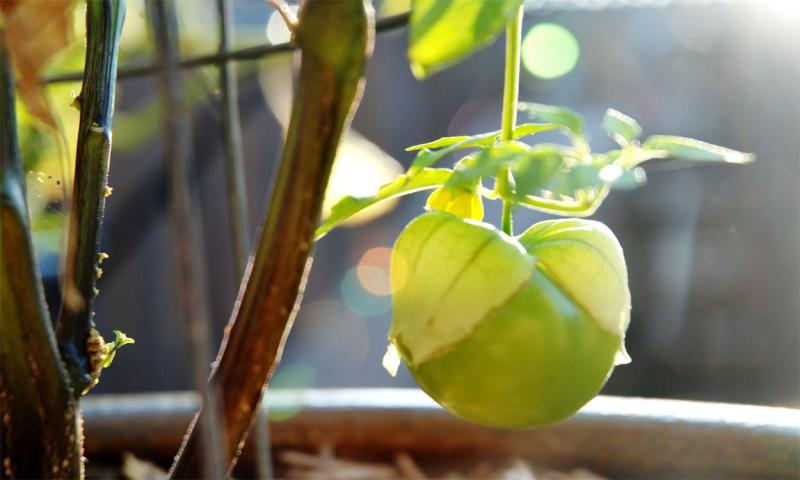
Tomatillos will be ready to harvest 75 to 100 days after transplanting. The fruit is ready to harvest when it completely fills the husk and easily falls off the plant when picked. Additionally, the husk will dry out and turn from a green color to a tan color and will begin to split open. The color of fruit itself at maturity varies by cultivar, but green varieties of tomatillos should be harvested before they start to turn yellow or purple. Once green varieties begin to change color, they become soft and lose their tangy flavor. Tomatillos are indeterminate plants, meaning that they will produce fruit continuously throughout the season, which allows for multiple harvests. Most tomatillos are harvested at physiological maturity, but some people prefer to harvest them earlier because they tend to have a stronger flavor if they are harvested a little early.
How to Harvest Tomatillos
Tomatillos can be harvested using a pruner or scissors and snipping the fruit from the plant, or by simply twisting the fruit and gently pulling. As mentioned above, tomatillos should come off the plant easily when they are ripe, so there should be no need to pull too hard, as this could damage the plant. Fruit sometimes drops from the plant before it is ripe. Because tomatillos continue to ripen after they are separated from the plant, these can be gathered and stored in their husks until they ripen. As tomatillos are harvested from the plant, they should be placed gently (not tossed) into a clean bucket or harvest bin to avoid bruising and cracking. Be sure to harvest any fruit (ripe or unripe) before a freeze in order to avoid damage to the fruit. The fruit may be sticky if the husk is removed, so it is best to keep the fruit in the husk until it is ready to be used.
Cleaning Tomatillos
Before tomatillos are ready to be eaten or processed, they need to be properly cleaned. Since tomatillos are sold with the husk on, cleaning is generally done after purchasing the fruit. First, the husk and calyx need to be removed from the fruit, because they are not edible. The fruit itself is usually sticky, so the next step is to wash off the sticky residue. This can be done by using water and a mild soap. Before eating or processing tomatillos, the fruit should be washed and dried. This is especially important for any fruit that has fallen from the plant or touched the ground at all. Although tomatillos are usually cleaned after purchase, farmers can ensure that the fruits remain as clean as possible before they are sold by sorting and removing damaged fruit in order to prevent any disease entry points or contamination of clean, undamaged fruit.
Sorting and Marketability of Tomatillos
According to the USDA, there are no U.S. grade standards for tomatillos; however, marketable fruits would be those that are firm, but not hard. Tomatillos should not be sold if they are over or under-ripe. Green varieties should still be green (not yellow or purple). The husk should completely or almost completely cover the fruit, and there should be no damage on the fruit. Tomatillos can be sorted however the producer sees fit; for example, they could be sorted by size or color.
Harvest and Post-harvest Food Safety
Tomatillos are usually cooked before they are eaten, but they can be consumed raw, so food safety is important. A few food safety concerns for tomatillos include possible soil contamination if the fruit falls off the plant, contamination where the husk splits, and soil splashing onto fruit during rainfall. The risk of soil splashing onto the fruit can be reduced by using mulch, such as straw or dry clippings. Soil contamination from splashing or contamination where the husk splits is addressed by peeling and washing the fruit before use. Other possible contamination can come from unclean hands, tools, and harvest bins, and should be minimized by washing hands and cleaning and sanitizing all harvest equipment.
On-farm Storage of Tomatillos
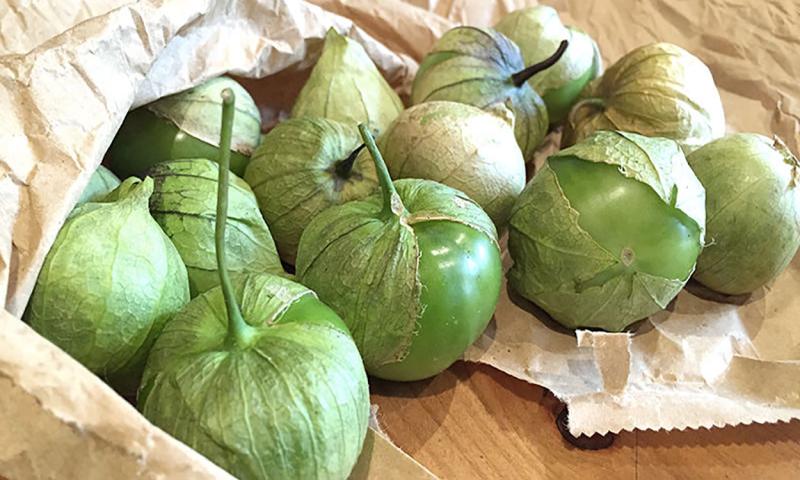
After harvesting, tomatillos do not require a curing phase, but should be stored in a cool, well-ventilated space between 42 degrees and 60 degrees Fahrenheit with 60 to 80% relative humidity. Tomatillos can be kept in a paper bag in the fridge with the husks on for 1 to 2 weeks. If the fruit is kept in an airtight bag, it will spoil much faster, so keeping it in paper bags is essential. Tomatillos can also be stored this way in bulk using plastic storage crates, as long as they are well-ventilated and the fruit remains at the proper temperature. The fruit can also be frozen and will last in the freezer for up to 8 to 12 months. In order to freeze tomatillos, the husks should be removed, and the fruit should be washed and dried, then frozen in a freezer bag. For all storage methods, fruit should be placed one layer deep. Improper storage can lead to chilling injury and spoilage. Tomatillos will suffer from chilling injury if they are kept at temperatures lower than 41 degrees Fahrenheit and not frozen. Chilling injury presents itself as pitting of the skin and spoilage. Tomatillos are also ethylene-sensitive, so do not store them near fruits like apples or bananas.
Marketing Tomatillos
Most large shipments of fresh tomatillos in the United States come from California and Mexico; however, they are commonly sold around the United States at farmers’ markets, CSAs, and roadside stands. Larger scale production of tomatillos usually requires access to wholesale marketing channels, such as local grocery stores or restaurants. There may be a larger demand for locally grown tomatillos in restaurants that specialize in Mexican and vegetarian dishes. Due to their popularity in many Mexican dishes, such as salsas, salsa verde, stews, and moles, tomatillos may have a greater market potential at farmers’ markets in areas with larger Hispanic populations.
References
- Albert, S. (n.d.). How to Plant, Grow, and Harvest Tomatillos. Retrieved from Harvest to Table.
- Andrychowicz, A. (n.d.). When and How to Harvest Tomatillos. Retrieved from Get Busy Gardening.
- Bell, N., Noordijk, H., Detweiler, A. J., & Bubl, C. (2014, September). Grow Your Own Tomatoes and Tomatillos. Retrieved from Oregon State University Extension Service.
- Everhart, E., Haynes, C., & Jauron, R. (2003, April). Tomatillos. Retrieved from Iowa State University Extension and Outreach.
- Garden-Robinson, J. (2020, May). Food Storage Guide Answers the Question. Retrieved from North Dakota State University Extension.
- Kaiser, C., & Ernst, M. (2017, March). Tomatillo. Retrieved from University of Kentucky Cooperative Extension Services.
- MacKenzie, J. (2018). Growing Tomatillos and Ground Cherries in Home Gardens. Retrieved from University of Minnesota Extension.
- Majkowska-Gadomska, J., Mikulewicz, E., & Francke, A. (2021). Effects of Plant Covers and Mulching on the Biometric Parameters, Yield and Nutritional Value of Tomatillos (Physalis ixocarpa Brot. Ex Hornem.). Agronomy.
- Pedersen, K., & Drost, D. (2020, April). Tomatillos in the Garden. Retrieved from Utah State University Yard and Garden Extension.
- Samuels, J. (2015). Biodiversity of Food Species of the Solanaceae Family: A Preliminary Taxonomic Inventory of Subfamily Solanoideae. Resources.


